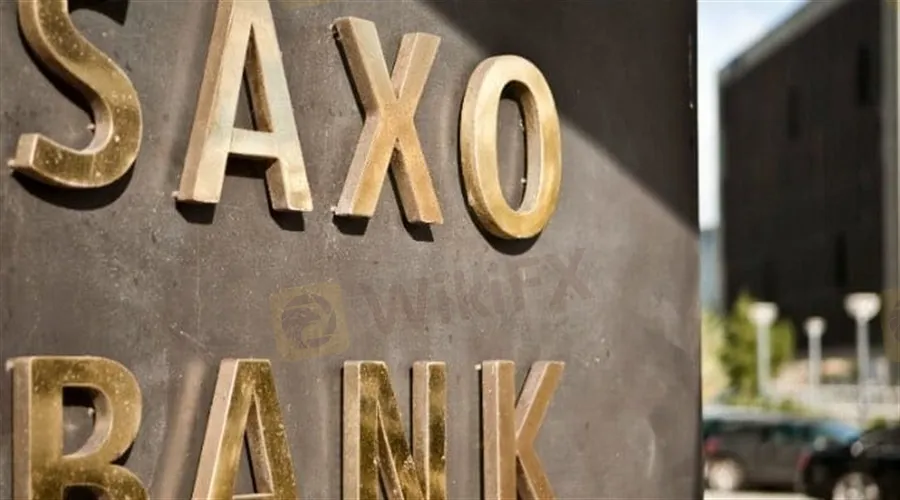简体中文
繁體中文
English
Pусский
日本語
ภาษาไทย
Tiếng Việt
Bahasa Indonesia
Español
हिन्दी
Filippiiniläinen
Français
Deutsch
Português
Türkçe
한국어
العربية
Saxo Sees Dip in December FX Demand, Equities Soars 49%
Abstract:FX demand for the month turned out to be the lowest in 2021. Equities trading jumped by 153.8 percent year-over-year.

Saxo Bank has released the trading numbers for December, showing a massive monthly surge in demand for its equities offering, but a decline in the foreign exchange (forex) trading volume.
Considering forex first, the total trading volume with the asset class came down to $95.7 billion from the previous month‘s $99.2 billion. That was a month-over-month decline of 3.5 percent. In addition, the daily average volume declined to $4.2 billion last month from November’s $4.5 billion.
Though a monthly decline can be justified as a cyclical trend of the industry, forex demand on the trading platform also dropped significantly year-over-year. In December, Saxo reported $128.1 billion in trading volume, making last months yearly drop as much as 25 percent or more.
Moreover, the reported FX trading volume for December 2021 was the lowest the Danish trading platform had recorded in the whole year.
Jump in Equities
Unlike forex, equities trading demand on Saxo surged by more than 49 percent when compared with the previous month. In absolute terms, the total monthly volume with equities came in at $233 billion. On a yearly basis, demand for equities instruments increased by 153.8 percent.
While commodities demand declined by almost 15 percent to $25.6 billion in December, commodities demand remained flat at $6.8 billion. Despite the downturn in forex trading, the upward drag in equities demand resulted in an uptick in the overall monthly volume that came in at $361.1 billion. Additionally, the total monthly volume surged by 23.6 percent month-over-month and over 42 percent year-over-year.
Furthermore, Saxo offers cryptocurrency derivatives to its clients in Singapore and Australia. Launched in May last year, crypto products are high in demand as they brought in $2.5 billion in turnover until October.

Disclaimer:
The views in this article only represent the author's personal views, and do not constitute investment advice on this platform. This platform does not guarantee the accuracy, completeness and timeliness of the information in the article, and will not be liable for any loss caused by the use of or reliance on the information in the article.
Read more

The Ultimate Guide to Automated Forex Trading in 2025
Modern markets are revolutionized by automated trading systems, which now execute 70-85% of all transactions. These advanced automated trading software solutions, commonly called trading robots or Expert Advisors (EAs), leverage algorithmic precision for automatic trading across forex, stocks, and commodities 24/7. By removing emotional interference and executing trades in microseconds, auto forex trading platforms create fair opportunities for all market participants. For those new to automated trading for beginners, these systems provide disciplined, backtested strategies while significantly reducing manual effort.

Will natural disasters have an impact on the forex market?
The forex market is known for its rapid responses to global events, but the influence of natural disasters, such as earthquakes and typhoons, can be less straightforward. While headlines may scream about catastrophic damage and economic disruption, the long-term effects on currency values often depend on a blend of immediate shock and underlying economic fundamentals.

Philippines Deports 29 Indonesians Linked to Online Scam Syndicate in Manila
Online scam groups in the Philippines trick Filipinos into gambling and love scams, from Manila to Bacolod, causing trafficking and pain as police fight back.

Why does your mood hinder you from getting the maximum return from an investment?
Investment decisions are rarely made in a vacuum. Aside from the objective data and market trends, our emotions—and our overall mood—play a crucial role in shaping our financial outcomes. Whether you’re feeling overconfident after a win or anxious after a loss, these emotional states can skew your decision-making process, ultimately affecting your investment returns.
WikiFX Broker
Latest News
How Crypto Trading Transforms FX and CFD Brokerage Industry
UK would not hesitate to retaliate against US tariffs - No 10 sources
FCA Warns Against 10 Unlicensed or Clone Firms
CySEC Warns Against 14 Unlicensed Investment Websites
Top Currency Pairs to Watch for Profit This Week - March 31, 2025
Will natural disasters have an impact on the forex market?
Philippines Deports 29 Indonesians Linked to Online Scam Syndicate in Manila
Navigating the Intersection of Forex Markets, AI Technology, and Fintech
Exposed: Deceptive World of Fake Trading Gurus – Don’t Get Fooled!
AI-Powered Strategies to Improve Profits in Forex Trading
Currency Calculator







